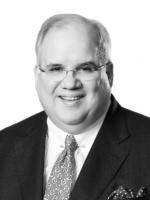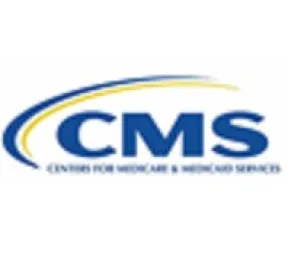The Coronavirus Aid, Relief, and Economic Security Act (the CARES Act), the massive stimulus legislation passed on March 27, appropriated $100 billion for the Public Health and Social Services Emergency Fund of the Department of Health and Human Services (the Relief Fund). According to the legislation, this $100 billion was to be used “for necessary expenses to reimburse, through grants or other mechanisms, eligible health care providers for health care related expenses or lost revenues that are attributable to coronavirus,” other than expenses or losses that have been reimbursed from other sources (or that other sources were obligated to reimburse). Under the terms of the appropriation, the secretary of the Department of Health and Human Services (HHS) was given broad discretion to determine what types of healthcare providers could receive payments from the Relief Fund, for what purposes those payments could be used, and what sorts of reports and documentation might be required of providers who received those payments. Indeed, about the only specific hard-and-fast requirement imposed on providers seeking to obtain payments from the Relief Fund was that the provider must submit to HHS “an application that includes a statement justifying the need of the provider for the payment.” This $100 billion payment was separate and distinct from other financial benefits for providers under the CARES Act, such as the deferral of certain scheduled Medicare payment reductions, the temporary loosening of restrictions on Medicare coverage for telehealth services, and the expansion of the Medicare hospital accelerated payment program during the public health emergency.
At the White House Coronavirus Task Force daily press briefing on April 7, 2020, Centers for Medicare & Medicaid Services (CMS) Administrator Seema Verma announced that CMS would begin distributing $30 billion of the $100 billion fund that same week. According to Verma, the funds would be distributed to Medicare providers via direct deposit, based on their relative Medicare fee-for-service reimbursements for 2019. She went on to say, “There are no strings attached. So the health care providers that are receiving these dollars can essentially spend that in any way that they see fit.” The indication was that the funds would be sent to all providers that had received Medicare reimbursement in 2019, without prior action on their part, despite the statute’s requirement that providers seeking money from the Relief Fund submit an application justifying the need for the payment. And indeed, payments reportedly began appearing in providers’ accounts on Friday, April 10.
That same day, however, HHS released a 10-page document designated “Relief Fund Payment Terms and Conditions” (the Terms and Conditions) that made it clear that “no strings attached” was, shall we say, in the eye of the beholder. The Terms and Conditions stated that providers receiving a portion of the $30 billion payment would be subject to certification, documentation, and reporting requirements and to a detailed list of restrictions on what the funds could be used for. Some of those restrictions were specific to the Relief Fund payments; others were general restrictions provided for in the FY 2020 Consolidated Appropriations Act or in other statutory or legislative provisions. Providers who receive the payments must sign an online attestation acknowledging receipt and agreeing to comply with the Terms and Conditions. Any provider who receives a payment and does not return it within 30 days of receipt will be deemed to have agreed to the Terms and Conditions, whether or not that provider signs the attestation.
Key provisions of the Terms and Conditions specific to the Relief Fund payments include the following:
-
The provider must be currently enrolled in Medicare and must currently provide diagnoses, testing, or care for individuals with possible or actual cases of COVID-19. (A description of the Relief Fund program indicates that “HHS broadly views every patient as a possible case of COVID-19” and also indicates that a provider that ceased operation as a result of the pandemic is still eligible to receive funds, as long as that provider, before ceasing operation, provided diagnoses, testing, or care for individuals with possible or actual cases of COVID-19.).
-
The provider must certify that the payment “will only be used to prevent, prepare for, and respond to coronavirus” and will only be used to reimburse the provider for “health care related expenses or lost revenues that are attributable to coronavirus.”
-
Consistent with the statute, the provider must certify that the payment will not be used to reimburse expenses or losses that are or will be reimbursed from other sources.
-
The provider must submit such reports as HHS determines in the future are needed to ensure compliance with any of the Terms and Conditions.
-
If the provider is an entity that receives more than $150,000 in the aggregate in funds paid out under the CARES Act (including, but apparently not limited to, Relief Fund payments), the Coronavirus Preparedness and Response Supplemental Appropriations Act, the Families First Coronavirus Act, or any other coronavirus response legislation, the provider must submit a report to HHS and the Pandemic Response Accountability Committee (PARC) within 10 days after the end of each calendar quarter. (It appears, although it is not made clear, that the $150,000 is intended only to mean funds from HHS.) According to the Terms and Conditions, the report must contain:
-
The total amount of funds received from HHS under any of the above acts.
-
The amount of such funds that were expended or obligated for “each project or activity.”
-
A detailed list of all projects or activities for which “large covered funds” were expended, including the name and description of each project or activity, the estimated number of jobs created or retained by such project or activity, and information required to comply with the Federal Funding Accountability and Transparency Act of 2006 (“large covered funds” appears to mean a single grant or subgrant exceeding $150,000, based on the definition at a Department of Justice website with the intriguing URL ojp.gov/secret-test-page).
-
-
The provider must maintain “appropriate records and cost documentation including, as applicable, documentation required by 45 CFR § 75.302 – Financial management and 45 CFR § 75.361 through 75.365 – Record Retention and Access” and such other documentation as may be required in the future to “substantiate the reimbursement of costs” from Relief Fund payments. These records and documents must be submitted to HHS upon request and are subject to audit by HHS, the HHS Office of Inspector General, or PARC.
-
The provider must certify that it will not seek to collect from out-of-network patients with possible or actual cases of COVID-19 any out-of-pocket expenses in an amount greater than what the patient would have had to pay if the care had been provided by an in-network provider.
In addition to these Relief Fund-specific requirements, providers who receive and retain payments from the Relief Fund will be subject to a wide variety of other restrictions and requirements that are more generally applicable to payments from congressionally appropriated funds. For example, the funds may not be used for lobbying or propaganda purposes, to advocate or promote gun control, to advocate or promote any tax increase, to pay for abortions, to pay for health benefits coverage that includes coverage of abortion, to pay the salary of an individual at an annual rate greater than $197,300, to promote the legalization of any Schedule I controlled substance, to engage in any project that entails the capture or procurement of chimpanzees from the wild, or “to maintain or establish a computer network unless such network blocks the viewing, downloading, and exchanging of pornography.”
Thus, “no-strings” payments from the Relief Fund have potentially significant reporting and documentation requirements that are as yet undefined. For entity providers receiving more than $150,000 under any of the coronavirus-specific legislation, there are substantial reporting obligations that seem to be derived from the requirements more typically associated with federal grants and awards for specific projects. It is not readily apparent what the utility of such reporting will be where federal funds are being used for the reimbursement of operating expenses and lost revenues, which is the required use of Relief Fund payments. Further, some of the reporting and certification requirements seem to ignore the basic truth that money is fungible. A direct deposit into a provider’s bank account is, by definition, commingled with other funds of the provider. If the provider were to use money from that account to, say, pay for employee health coverage that included coverage for abortions or make a donation to Doctors 4 Gun Safety or, for that matter, to capture or procure chimpanzees from the wild, it would be functionally impossible to determine whether the source of such money was Relief Fund payments, patient revenues, or lottery winnings. However, providers will have to certify that they did not in fact use the proceeds of Relief Fund payments for prohibited activities, even though that certification cannot be proven to be true unless the provider immediately segregates Relief Fund payments.
Another complexity arises from the requirement for providers to treat all actual or possible COVID-19 patients as if the provider were in-network with the patient’s health benefits plan. Leaving aside the problems this behavior would give rise to in more ordinary times (an out-of-network provider who charges a patient only the in-network copayment has arguably committed insurance fraud if that is not disclosed to the payor; one assumes that most payors are not going to assert that in the current circumstances), this requirement is still not as simple as it may seem. First, the requirement assumes that the patient has some sort of public or private insurance (or else there would be no in-network amount). However, this requirement does not speak to what the provider may charge if the patient is uninsured, even though HHS Secretary Alex Azar had previously suggested that Relief Fund payments might be used to pay for hospital care for uninsured patients. More generally, the requirement is imposed on providers only with respect to the treatment of a “possible or actual” case of COVID-19. As noted above, however, HHS has said that it “broadly views every patient as a possible case of COVID-19.” Taking that statement and the certification requirement together would suggest that during the pendency of the public health emergency at least, providers would have to treat all patients as if they were in-network, even if those patients ultimately test negative for the virus. That is presumably not the intended result, but a provider who takes the certification obligations seriously must at least think through how it will ensure that it remains in compliance with its certification.
Now, a bird in the hand continues to be worth two in the bush (perhaps even three, in the current state of the economy), and it is likely that most providers that received Relief Fund payments on Friday (or that will receive them this week) will cheerfully attest to acceptance of the Terms and Conditions rather than send the money back. However, providers should be aware that in retaining such payments, they are taking on obligations, some of them potentially quite significant. Those obligations may not have been apparent in the phrase “no strings attached,” but they are real, and providers who receive Relief Fund payments should ensure that they understand those obligations and are prepared to document compliance with them.




 />i
/>i

